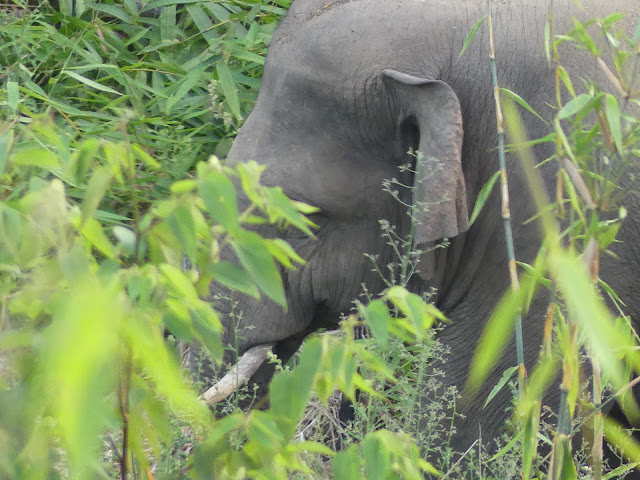Introduction
The Asian
elephant (Elephas maximus) is one of the most iconic and revered species
on our planet. These magnificent creatures hold significant ecological,
cultural, and economic importance. Understanding their origins, distribution,
and conservation status is essential for fostering awareness and protecting
their future.
Origins
of Elephants
Elephants
are part of the family Elephantidae, which has existed for millions of years.
The earliest known ancestors of modern elephants date back to the late Eocene
epoch, approximately 55 million years ago. The Asian elephant, specifically,
diverged from its African relatives around 6 million years ago.
The Asian
elephant is believed to have evolved in South Asia and spread across the
continent. Fossils suggest that ancient elephants roamed across much of Asia
and into Europe. However, due to habitat loss and human activities, their
populations have dwindled significantly over time.
Importance
on Our Planet
Asian
elephants play a critical role in their ecosystems. As megaherbivores, they
help maintain the structure of their habitats by controlling vegetation and
promoting biodiversity. Their foraging habits create clearings in forests that
benefit a range of other species.
Culturally,
elephants are integral to many Asian societies, symbolizing wisdom, strength,
and good fortune. They are often featured in religious and cultural ceremonies,
reflecting their deep-rooted significance in human history.
Economically,
elephants contribute to tourism and agriculture. Elephant sanctuaries attract
visitors, providing livelihoods for local communities, while their traditional
use in logging and farming, though controversial, has historically supported
various economies.
Species
of Elephants
There are
three recognized species of elephants:
- Asian Elephant (Elephas
maximus)
- African Bush Elephant (Loxodonta
africana)
- African Forest Elephant (Loxodonta
cyclotis)
Population
Estimates
- Asian Elephant: Approximately 40,000 to 50,000
individuals remain in the wild, primarily in India, Sri Lanka, Thailand,
and parts of Southeast Asia.
- African Bush Elephant: The largest of the elephant
species, their population is estimated at around 415,000 individuals,
primarily found in sub-Saharan Africa.
- African Forest Elephant: This smaller species has a
more limited range and is estimated to number between 30,000 to 60,000
individuals, primarily in the rainforests of West and Central Africa.
Distribution
by Region
- Asian Elephants: Predominantly found in India,
with significant populations in Sri Lanka, Thailand, Myanmar, and smaller
populations in Bangladesh, Bhutan, Cambodia, Laos, Nepal, and Vietnam.
- African Bush Elephants: Their range includes countries
such as Botswana, Zimbabwe, Tanzania, and Kenya, thriving in savanna
habitats.
- African Forest Elephants: These elephants inhabit dense
rainforests in countries like Gabon, the Republic of the Congo, and the
Democratic Republic of the Congo.
Conservation
Challenges
Asian
elephants face numerous threats, including habitat loss, human-wildlife
conflict, and poaching. Efforts to conserve their populations include habitat
restoration, establishing wildlife corridors, and increasing public awareness.
Organizations worldwide are working to implement strategies that balance the
needs of local communities with elephant conservation.
Conclusion
The Asian
elephant is not just a symbol of majesty but also a crucial player in
maintaining ecological balance. Understanding their history, importance, and
current challenges is vital for their conservation. Protecting these gentle
giants is essential not only for their survival but for the health of the
ecosystems they inhabit and the cultural heritage they represent. As we move
forward, it is imperative to support conservation efforts to ensure that future
generations can continue to marvel at these magnificent creatures.




